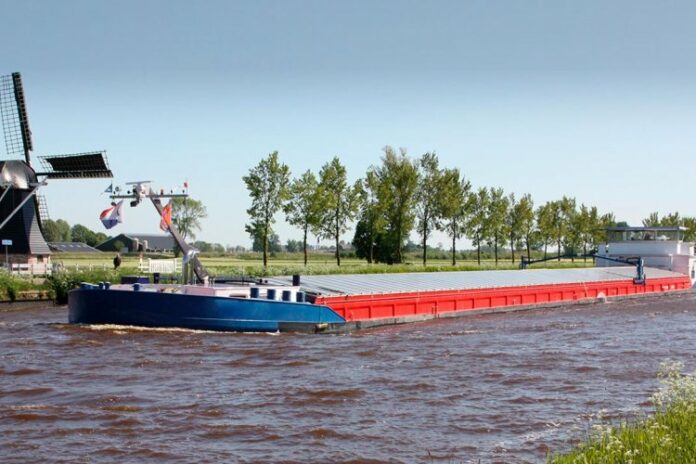Dutch Minister of transport Cora Van Nieuwenhuizen visited Rotterdam to grant 4 million euros for the first hydrogen-powered cargo ship of Lenten Scheepvaart, a member of the inland shipping cooperative NPRC.
This subsidy is an important step in the realization of this ship, which will be part of a salt transport shuttle for the multinational chemical company Nobian (a Nouryon company) between Delfzijl and Rotterdam. Furthermore, this grant helps the inland navigation transport sector in becoming more sustainable and is a big step in the implementation of the Green Deal. The ship is scheduled to enter service in 2023 and will run on green hydrogen.
This supply chain project is an important contribution to a system change towards emission-free transport over water and the reduction of CO2 emissions in the Netherlands. The newly built ship is expected to transport 250,000 tons of salt per year within the Netherlands and will be propelled by an electric drive with a hydrogen fuel cell providing the power. The motor vessel Antonie will therefore be the first newly built hydrogen-powered dry bulk barge in the world. Nobian and NPRC are also partners in the Rh2ine project, for the development of a hydrogen infrastructure for the salt transport fleet in ports and charging stations along the Rhine.
NPRC CEO Femke Brenninkmeijer said:
“The success of this project is the cooperation. Between shipper, barge owner, cooperative and the government. Only with the support of all stakeholders is it possible to move from dreams to reality, from words to deeds, towards zero-emission transport over water. The strength of our cooperative lies in long- term cooperation between supply chain partners in the field of logistics and sustainability, which can now be seen in concrete results in terms of zero-emission and digitalization of the supply chain. The NPRC is the frontrunner of this development.”
The use of hydrogen in inland navigation is still in its infancy. There are already examples of ships that run on hydrogen, but these are existing ships that have been converted to run on hydrogen. Developing a new vessel that runs on hydrogen, gives the opportunity to optimize the design. With the practical experience gained in this pilot project, more ships can be fitted with a fuel cell in the future.
Additionally, this pilot project makes it possible to experiment with production, storage and transport of hydrogen applications. The gained knowledge will further help to accelerate the transition from gas oil driven engines to clean propulsion of inland vessels. Lenten Scheepvaart is building a completely new 135-meter, 3,700-ton inland navigation vessel that will be propelled by a hydrogen-electric fuel cell.
Inland waterway shipping makes an important contribution to the modal shift of goods transport from road to water and the reduction of emissions. The Dutch government, the Dutch provinces, ports, maritime industry associations, shippers, shipping agents, banks and research institutions have joined forces in 2019 with the ‘Green Deal Maritime Shipping, Inland Waterway Shipping and Ports’ to make shipping more sustainable.
The construction of this vessel is a great example for the success of cooperation in inland waterway shipping, where shippers and inland shipping cooperatives are committed to making the supply chain more sustainable.
Hydrogen is safer than LNG and can be largely treated in the same way. The fuel is widely available in Delfzijl and Rotterdam, completely clean and has no CO2 emissions, but pure water. The initiative is part of the ‘Green Deal’ of the Dutch Minister of Transport Van Nieuwenhuizen, which is full of initiatives to make transport over water as emission-free as possible. In total, the minister grants 15 million euros to the inland shipping sector to stimulate innovations.



